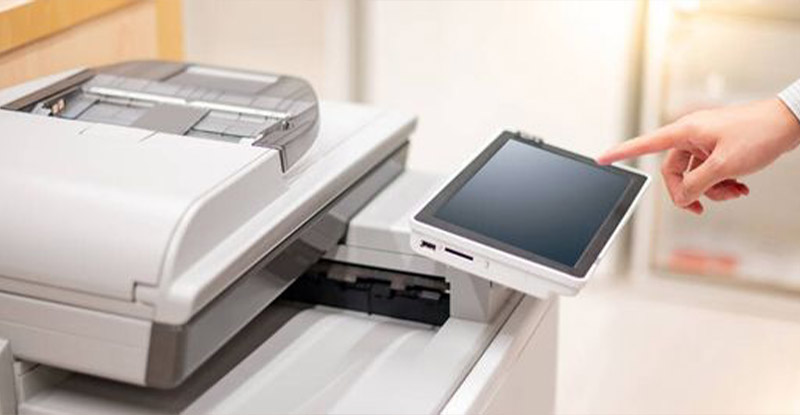OCR Receipt Scanning:
7 Benefits for Manufacturing Industry


Explore the efficiency and accuracy of OCR receipt scanning in manufacturing with our comprehensive resource. Discover how this innovative technology streamlines accounts payable processes, reduces manual errors, and enhances financial transparency in the manufacturing sector.
In the bustling heartbeat of a manufacturing facility, data flows through countless channels. From purchase orders to quality control reports, information fuels every step of the production process. Yet, a hidden source of valuable data often lies buried in a tangled mess – paper receipts. These seemingly insignificant slips hold a wealth of details, from raw material costs to vendor information, but extracting this data manually can be a time-consuming and error-prone endeavor.
Enter OCR receipt scanning, a technology poised to revolutionize data capture in the manufacturing landscape. This article unveils the transformative power of OCR for receipt scanning, exploring its potential to streamline workflows, enhance data accuracy, and unlock powerful insights for your production line.

Experience the efficiency of OCR receipt scanning integrated with InvoiceAction. SForget about time-consuming manual data entry, reduce processing times, and gain real-time insights into your financial transactions. Let InvoiceAction powered by OCR technology transform your AP workflow and elevate your business operations.
OCR (Optical Character Recognition) receipt scanning in manufacturing involves the use of technology to automatically extract and digitize information from receipts, invoices, and other financial documents.
By leveraging OCR technology, manufacturing companies can streamline their accounts payable processes by eliminating manual data entry and reducing errors. OCR receipt scanning software can accurately capture key data points such as vendor names, invoice numbers, dates, and amounts, enabling faster processing and approval of invoices.
RELATED: OCR Data Capture with Artificial Intelligence
OCR technology enhances efficiency, improves accuracy, and provides greater visibility into financial transactions within the manufacturing workflow. Let’s take a closer look.
Revolutionize Your Order Processing with OrderAction and OCR Receipt Scanning!
Unlock the power of automation and accuracy in managing purchase orders with OrderAction. Seamlessly integrate OCR receipt scanning to effortlessly capture and process order details, streamline inventory management, and improve vendor relationships. Elevate your procurement processes with OrderAction today!
Book a demo now
OCR receipt scanning holds immense potential for streamlining and optimizing various aspects of a manufacturing operation. Here are some specific use cases:
RELATED: OCR for PDF
Beyond these specific uses, OCR receipt scanning can also:
Investing in OCR receipt scanning technology represents a significant step towards optimizing data processes and gaining a competitive edge in the manufacturing industry. By automating data capture, reducing manual errors, and unlocking valuable insights, OCR empowers manufacturers to achieve greater efficiency, cost savings, and informed decision-making across their operations.
Discover the Future of Financial Automation with ArtsylPay and OCR Technology!
Take control of your accounts payable process like never before with ArtsylPay. By leveraging OCR receipt scanning, ArtsylPay automates invoice data extraction, enhances accuracy, and accelerates payment approvals. Embrace the future of financial automation and drive efficiency with ArtsylPay today!
Book a demo now
The benefits of OCR (Optical Character Recognition) receipt scanning in manufacturing are numerous and include:
OCR receipt scanning automates the data entry process, significantly reducing the time and effort required to input information from receipts and invoices into the system. This efficiency allows manufacturing companies to streamline their accounts payable processes and allocate resources more effectively.
Manual data entry is prone to errors, which can lead to discrepancies in financial records and delays in processing invoices. OCR receipt scanning technology ensures greater accuracy by digitizing and extracting data from receipts with high precision, minimizing the risk of human error and ensuring the integrity of financial information.
RELATED: AI Powered OCR Document Processing
By automating the receipt scanning process, manufacturing companies can reduce labor costs associated with manual data entry tasks. Additionally, improved accuracy can help avoid costly errors and discrepancies in financial records, leading to potential savings in the long run.
OCR receipt scanning accelerates the processing of invoices and receipts by extracting relevant information quickly and accurately. This enables manufacturing companies to expedite payment approvals, take advantage of early payment discounts, and maintain positive relationships with suppliers.
By digitizing receipts and invoices, OCR scanning provides greater visibility into financial transactions and spending patterns. Manufacturing companies can easily track expenses, analyze spending trends, and make informed decisions to optimize their financial processes and allocate resources more strategically.
OCR receipt scanning technology helps manufacturing companies maintain compliance with regulatory requirements and internal policies by ensuring accurate and consistent record-keeping practices. Digitized receipts and invoices can be easily accessed, archived, and audited as needed, facilitating compliance with industry standards and regulations.
Overall, OCR receipt scanning offers manufacturing companies a range of benefits, including increased efficiency, accuracy, cost savings, faster processing times, enhanced visibility, and improved compliance with regulatory requirements.
By leveraging OCR technology in their processes, manufacturers can streamline their accounts payable processes and gain a competitive edge in today’s fast-paced business environment.
Transform Your Document Management Workflow with docAlpha and OCR Receipt Scanning!
Elevate your document processing capabilities with docAlpha’s advanced OCR technology. Seamlessly capture and digitize receipts and invoices, automate data extraction, and integrate with your existing ERP systems. Experience streamlined document management and unlock new levels of productivity with docAlpha.
Book a demo now
OCR is a technology that converts scanned images or documents containing text into machine-readable text data. In manufacturing, OCR receipt scanning involves using OCR software to extract text and numeric data from scanned receipts and invoices, enabling automated data entry and processing.
Receipt scanning involves capturing images of physical receipts using scanners or mobile devices and converting them into digital format. In manufacturing, receipt scanning with OCR technology allows for the automatic extraction of relevant information from receipts, such as vendor names, dates, amounts, and purchase details.
Data extraction is the process of identifying and capturing specific information from documents or images. In OCR receipt scanning for manufacturing, data extraction involves extracting key data points from scanned receipts, invoices, and other financial documents to facilitate automated processing, analysis, and reporting.
Automated data entry refers to the process of extracting text and numeric data from scanned receipts and invoices without manual intervention. In manufacturing, OCR receipt scanning automates data entry tasks by accurately capturing information such as vendor names, invoice numbers, dates, and amounts from scanned documents, saving time and reducing errors.
RELATED: OCR: What Optical Character Recognition Is?
Document classification is the categorization of scanned receipts and invoices based on predefined criteria, such as document type or vendor category. In manufacturing, OCR receipt scanning systems can classify documents automatically, enabling streamlined processing and organization of financial records.
Data validation involves verifying the accuracy and completeness of extracted data against predefined rules or criteria. In OCR receipt scanning for manufacturing, data validation mechanisms ensure that extracted information, such as invoice totals or payment due dates, meets quality standards and complies with company policies and regulations.
Take the Leap into Efficiency with OCR Receipt Scanning Integrated into Your Business Processes!
Explore the transformative power of OCR receipt scanning as part of your business automation journey. Enhance accuracy, reduce manual effort, and accelerate decision-making with InvoiceAction, OrderAction, ArtsylPay as part of docAlpha intelligent automation platform. Embrace the future of automation and drive success in your organization today!
Book a demo now
Integration of OCR (Optical Character Recognition) receipt scanning with manufacturing ERP (Enterprise Resource Planning) systems involves connecting OCR technology with the existing ERP infrastructure to streamline data capture and processing from scanned receipts and invoices. By integrating OCR receipt scanning with ERP systems, manufacturing companies can automate the extraction of data from scanned documents, eliminating manual data entry tasks and reducing processing times.
In addition, OCR technology ensures accurate capture of text and numeric data from scanned receipts, minimizing errors and discrepancies in financial records stored within the ERP system.
In terms of workflow, integration with ERP systems enables seamless transfer of scanned receipt data into relevant modules such as accounts payable or procurement, streamlining the entire invoice processing workflow and improving overall efficiency.
With OCR receipt scanning integrated into ERP systems, manufacturing companies gain real-time visibility into financial transactions, enabling better decision-making and resource allocation based on up-to-date information. Such integration ensures that scanned receipt data is securely stored and compliant with regulatory requirements, maintaining data integrity and facilitating audit trails within the ERP environment.
Overall, the integration of OCR receipt scanning with manufacturing ERP systems enhances data accuracy, operational efficiency, and compliance, driving greater productivity and transparency in financial processes within the manufacturing industry.
By embarking on this journey with OCR receipt scanning, you’ve equipped yourself with a potent tool to transform your manufacturing data landscape.
Remember, the true magic lies in leveraging the captured data – integrating it with existing systems, automating processes, and generating actionable insights. Embrace continuous learning, explore advanced OCR features like data extraction and analytics, and witness your manufacturing operations evolve into a data-driven powerhouse. From streamlined purchasing to predictive maintenance, the possibilities are limitless.

Contact Us for an in-depth
product tour!
OCR receipt scanning is a technology that converts scanned images of receipts and invoices into machine-readable text data. It enables the automatic extraction of key information such as vendor names, dates, amounts, and purchase details from scanned documents.
OCR receipt scanning works by analyzing the text characters in scanned images using optical character recognition algorithms. These algorithms identify patterns and shapes to recognize and convert text into digital format, allowing for the extraction and processing of data.
The benefits of OCR receipt scanning include improved efficiency in data entry, reduced manual errors, faster processing of invoices, enhanced accuracy in financial records, and streamlined accounts payable processes.
Yes, OCR receipt scanning can be integrated with various systems such as accounting software, enterprise resource planning (ERP) systems, and document management platforms. Integration enables seamless data transfer and workflow automation.
Integration with ERP (Enterprise Resource Planning) systems involves connecting OCR receipt scanning software with existing manufacturing software platforms to facilitate seamless data exchange and workflow automation. Integrated OCR solutions enable manufacturing companies to transfer scanned receipt data directly into ERP systems, improving visibility, efficiency, and data integrity across the organization.
Yes, OCR receipt scanning solutions prioritize data security by employing encryption protocols, access controls, and secure storage mechanisms to protect sensitive information extracted from scanned receipts and invoices.
OCR receipt scanning can process various types of documents, including receipts, invoices, purchase orders, bills, contracts, and financial statements, among others.
Yes, OCR receipt scanning can benefit businesses of all sizes, from small startups to large enterprises. It offers scalability, flexibility, and cost-effectiveness in managing financial documents and streamlining accounts payable processes.

OCR receipt scanning accuracy depends on factors such as image quality, font types, and document layout. Advanced OCR technologies strive for high accuracy rates, but occasional errors may occur, necessitating manual verification and correction.
Best practices for implementing OCR receipt scanning include ensuring high-quality scanned images, selecting reliable OCR software, configuring accurate data extraction rules, conducting regular quality checks, and providing training for users.
Businesses can get started with OCR receipt scanning by researching available OCR solutions, evaluating their specific needs and requirements, selecting a suitable vendor, and implementing the technology with proper training and support for users.